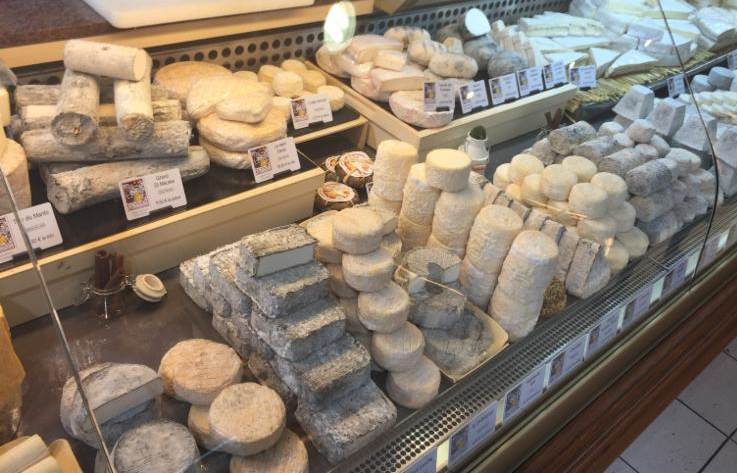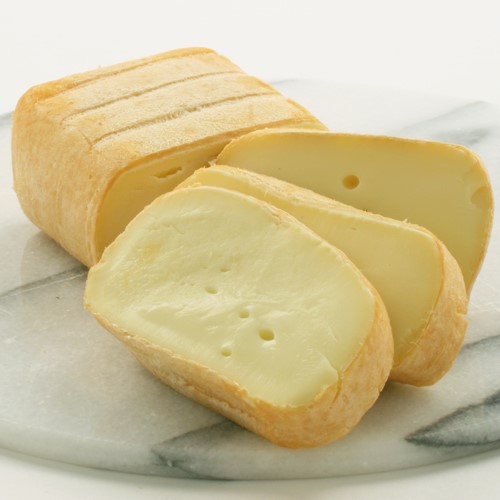|
Advancing Wound Healing with AdMatrix Dermal Scaffold
Greetings from London!
Members of the Lattice Team are currently touring Europe, bringing our products and programs to a wide range of prominent doctors, surgeons, and distributors. Meetings here have been extremely productive and we look forward to digging into operations again once back at headquarters stateside.
In this issue, we are incredibly pleased to bring you the first release of clinical data for AdMatrix, our acellular dermal scaffold product. AdMatrix is providing surgeons with greater flexibility to achieve successful interventions and outcomes for challenging wound care.
Also featured in this newsletter is the latest press release with an update on our merger with Blackstone Ventures. This update represents the next milestone, moving us further along the path to becoming a publically-traded company.
THIS ISSUE'S HIGHLIGHTS:
1. AdMatrix Clinical Data: Using aggressive surgical techniques in combination with Lattice Biologics' acellular dermal scaffold product to heal difficult wounds. An overview of the rapidly expanding global wound care problem, shortcomings in available other solutions, and case studies from Dr. Dinakar Golla's promising clinical experience with AdMatrix surgical grafts for soft tissue repair.
2. Update on Lattice's Merger with Blackstone Ventures: Read the latest press release regarding our reverse merger process, including Blackstone's completion of the first of two consolidations as part of the transaction.
3. Welcome to Dr. Golla: Get to know the newest member of our Scientific Advisory Board, Dr. Dinakar Golla, MD, the award-winning founder of the Golla Center for Plastic Surgery & Spa. Dr. Golla is the driven Board Certified Plastic Surgeon responsible for the AdMatrix case studies featured in this issue.
4. Biologics Fun Fact: The Chemistry behind Stinky Cheese. What makes some cheese so very, unrelentingly stinky? While traversing France on this distributor tour, we have had the good fortune to sample cheeses of all wonderful types, prompting us to ponder the cause of their various aromas. So crank up your smellevision and dive into this chemical conundrum with us!
Guy Cook,
CEO
Lattice Biologics, Inc.
|
|
TEAMeffort: AdMatrix Clinical Data 
Using aggressive surgical techniques in combination with AdMatrix (Lattice Biologics' acellular dermal scaffold product) to heal difficult and persistent wounds
Wound care is a serious and rapidly growing global health problem. The global wound care product market is projected to increase from an already staggering $16.8 Billion in 2014 to $21 Billion this year. Approximately 8 Million Americans currently suffer from chronic wounds. The time for innovative solutions is now.
|
 Update on Lattice's Merger with Blackstone Ventures Update on Lattice's Merger with Blackstone Ventures
September 24, 2015

Lattice Biologics Inc. is pleased to announce that Blackstone Ventures Inc. (TSX
-
V: BLV), a company listed on the TSX Venture Exchange, has completed its material due diligence in respect of its proposed acquisition (the "Transaction") of Lattice previously announced in Lattice's August 13, 2015 news release.
In connection with the Transaction, Blackstone completed the first of two consolidations (the first consolidation being a 20:1 consolidation of Blackstone) and is continuing its efforts to settle outstanding debt through the issuance of securities.
|
 Lattice Welcomes Lattice Welcomes
Dr. Dinakar Golla, New Scientific Advisory Board (SAB) Member!
Dr. Golla is a prolific lecturer and educator, dedicated to advancing the knowledge and techniques of surgeons worldwide. He has authored numerous articles, presented over 100 lectures on unique cutting edge techniques in plastic surgery, and has trained other surgeons who have traveled from near and far to learn from his expertise.
Dr. Golla's appointments and affiliations include:
- Plastic Surgeon / Owner - Golla Center for Plastic Surgery
- Young Surgeons Committee Member - American College of Surgeons
- Young Surgeon Representative - Southwestern Pennsylvania Chapter - ACS
Professional Associations:
- American Medical Society
- American College of Surgeons
- Pennsylvania Medical Society
- Pittsburgh Plastic Surgery Society
Dr. Golla has given over 100 educational presentations and courses, including:
Invited Lectures:
- Skin Cancer: A Surgeon's Perspective (Gandhi Hospital)
- Ventral Hernia: Role for Biologics (McGowan Biologics Symposium)
- Component Separation for Abdominal Hernias and Reconstruction (presented at: Treating Obesity: A Multidisciplinary Approach; Abdominal Wall Reconstruction Course, Washington DC; Northeastern Meeting; Gandhi Hospital; and IPRAS)
- Skin Cancer: A Surgeons Perspective (UPMC St. Margaret Conference Center)
- Skin Cancer: A Surgeons Perspective (Butler Hospital)
- Skin Cancer: A Surgeons Perspective (UPMC Passavant Conference Center)
- Wound Care: Novel New Therapies (Forbes Regional Hospital)
- Wound Care: Novel New Therapies (Butler Hospital)
- Wound Care: Novel New Therapies (Mon Valley Hospital)
- Plastic Surgery - Radial Nerve Palsy (Watson Learning Center)
- Plastic Surgery - Rhabdomyoma (Watson Learning Center)
- Plastic Surgery - Mortality and Morbidity: Breast Implant Extrusion (University of Pittsburgh Conference Center)
- Plastic Surgery - Mortality and Morbidity: Free Fibula Failure (University of Pittsburgh Conference Center)
- Plastic Surgery - Nasal Reconstruction (University of Pittsburgh Conference Center)
- Plastic Surgery - CMC Arthritis (Watson Learning Center)
- Plastic Surgery - Radial Artery Free Flap (University of Pittsburgh Conference Center)
- Facial Trauma - Mandibular Angle Fracture Management (University of Pittsburgh Medical Center)
Additional Presentations/Lectures:
- Wound Healing: Surgeons Perspective (Sheraton Station Square)
- New Treatments in Plastic Surgery (Butler Radio Station WISR)
- Wound Care: Novel New Therapies (National Association of Case Managers)
- Skin Cancer: A Surgeons Perspective (TAPI CME Event)
- Dupytren's Contracture (Orthopedic/Plastics Hand Conference)
Publications:
- "Traumatic intratendinous flexor Digitorum profundus rupture: A case report" (Canadian Journal of Plastic Surgery)
- "Case Report of Phototherapy for a Clinical Port Wine Lesion" (Aesthetic Plastic Surgery)
- "Breast Reduction After Massive Weight Loss" (Plastic Surgery Forum)
Background and Professional Distinctions:
Dr. Golla received his undergraduate degree in Medical Sciences from Boston University School of Arts, graduating summa cum laude and phi beta kappa. He went on to earn his graduate degree from the prestigious Boston University School of Medicine, graduating magna cum laude. During this time, he won the Alumni Association Award for efforts that raised the Boston University Medical School community, the Dean Eleanor Tyler Memorial Award for the seven-year medical program's top medical graduate, and the Merck Manual Award for the top three students of each medical school class.
He performed his General Surgery Residency and a Fellowship in Plastic and Reconstructive Surgery at the University of Pittsburgh Medical Center. Dr. Golla has served as a Clinical Assistant Professor of Plastic Surgery at the University of Pittsburgh Medical Center as well as Chief of UPP Plastic Surgery at UPMC St. Margaret and UPMC Passavant.
Welcome, Dr. Golla!
|
The Chemistry behind Stinky Cheese
So what's the deal?
Are turophobes just being dramatic, or does limburger cheese REALLY smell like stinky feet? Let's find out...
What is Cheese? Wikipedia describes Cheese as "a food derived from milk that is produced in a wide range of flavors, textures, and forms by coagulation of the milk protein, casein." In his article, "Really Cheesy Chemistry," the Royal Society of Chemistry's Simon Cotton proclaims cheese "the ultimate long-life milk, a foodstuff containing a lot of protein and fat, a source of essential amino acids as well as vitamins and minerals (eg calcium)." It can be rich, creamy, nutty, and sometimes, sharply exquisite.
How is Cheese made?
All cheeses are made in basically the same way: by curdling milk so that it separates into curds (solids) and
whey
(liquid).
- Start with the milk variety of your choice, such as: cow, sheep, goat, buffalo, or even donkey, yak, elk, or camel.
- Pasteurize the milk by briefly heating it to 70ºC to kill any harmful bacteria. Unlike sterilization, pasteurization only reduces the number of viable pathogens so they are unlikely to cause disease, leaving behind desirable bacteria.
- Cool the milk and transfer to a container.
- Add a starter culture of rennet and special bacteria (usually from the Streptococci and Lactobacilli families) to the mixture for about an hour or at 30-40ºC. During this time: bacteria ferment to break down the sugar found in milk (lactose) into lactic acid, reducing the mixture's pH value to about 4.6; chymosin (rennin) enzymes coagulate the casein, forming curds; starter bacteria metabolize citric acid to help further break down the milk protein.
- Allow warm curds to set for an hour or two.
- Cut the solid curds into smaller pieces to release more whey.
- Heat the mixture again in a process called "syneresis" to release even more whey.
- Drain the liquid whey off, leaving the curds behind.
- The curds will begin to clump together in a process deliciously called "cheddaring."
- Usually, add salt to improve taste and remove additional moisture.
- Press the salted curds into blocks and allow to cool.
- Store the solid blocks of cheese for several weeks or months for ripening.
- Crack open a bottle of vino and enjoy!
If all cheese is made basically the same way, how are there so many different types?
Several factors affect characteristics:
- Milk variety.
- Differences in starter cultures.
- Slight changes to the cheese-making process, such as the way cheesemakers give mozzarella its unique stretchy texture by kneading it like bread dough during production.
- Aging and washing (rind moistening) techniques.
 THE BIG QUESTION: why are some cheeses are so darned stinky and others barely give off a scent?
It's all about bacteria. The starter
culture
used to make each cheese is the predominant determinant of its taste, texture, and smell. THE BIG QUESTION: why are some cheeses are so darned stinky and others barely give off a scent?
It's all about bacteria. The starter
culture
used to make each cheese is the predominant determinant of its taste, texture, and smell.
The stench of smelly cheese comes from molecules resulting from breakdown of the three types of chemicals found in milk: the protein casein, lipids in milk fat, and lactose. The type of volatile compounds formed depend upon the specific microbes used as ripening agents as well as other factors, such as milk variety.
Lipolysis
(the breakdown of lipids involving hydrolysis of triglycerides into glycerol and free fatty acids) produces carboxylic acids, which are the source of a range of smelly molecules. On their own, carboxylic acids do not give off a wholesome aroma and require additional molecules to round out the bouquet.
Proteolysis
(the breakdown of proteins into smaller polypeptides or amino acids) breaks down casein into peptides and then into amino acids. These impart taste to cheese and undergo a wide range of transformations including decarboxylation, deamination, oxidation and reduction which supply a range of short-chain volatiles. Lastly, the breakdown of lactate and citrate produces molecules like diacetyl (which imparts a "buttery" taste), ethanol, and ethanol.
Other factors that can make cheeses especially stinky are aging and washing. Some cheeses are aged for many months. The extra aging often intensifies the cheese's aroma.
 Smell Hall of Fame: Smell Hall of Fame:
Époisses de Bourgognene is one of the smelliest cheeses and was a favorite of Napoleon, himself. This French cow's milk cheese which is washed in Marc de Bourgogne, an unaged pomace brandy that imparts a pungent smell of sour milk, smells so strongly that it has been banned from public transportation vehicles all over France.
Enjoy more fun cheesy facts in the column on the right!
|
What's next? Have a burning biological question you want answered? Email us!
|
|
|
|
|
THIS ISSUE'S FUN FACT: Stinky Cheese Chemistry
|
 |
CAUSES BEHIND THE BIGGEST OLFACTORY OFFENDERS
Blue cheeses:
Stilton, Roquefort, and Gorgonzola get their distinctive aroma from certain methyl ketones. These include alkan-2-ones, heptan-2-one, and nonan-2-one, which are credited for that signature blue cheese smell, and pentan-2-one, which is considered "fruity."
Camembert:
Much loved camembert is a surface mold-ripened cheese, whose characteristics rely on lactate metabolism. Camembert begins with the initial growth of micro-organisms such as Geotrichum candidum, followed by a Penicillium camemberti surface mold. As camembert ripens, calcium phosphate migrates away from the center of the cheese, causing its softness. Ripe camembert often smells of ammonia from deamination of amino acids and its odor is further enhanced by several compounds resulting from reactions during ripening. These volatiles include the odorant Methional and are known for contributing mushroom, buttery, garlic, cabbage, and boiled potato notes to the cheese.
Limburger:
The granddaddy of stinky cheeses and perhaps the most commonly maligned, Limburger is another surface-ripened semi-soft cheese. During production, this cheese is drained and its curds are cut, rolled in salt, and regularly brushed with a solution infused with Brevibacterium linens (B. linens), the bacterium responsible for fellow pungent cheeses Munster, Racellete, and Port-du-Salut. This brine solution creates ideal conditions for several carboxylic acids including the volatile butanoic, 3-methylbutanoic, and hexanoic acids. These endow the rind with the infamous "sweaty feet" stench. This tang diffuses from the surface throughout the entire cheese.
WONDER NO MORE: The uncanny stinky scent is no coincidence. Brevibacterium linens includes sulphur-rich compounds and is the universally present bacteria that causes foul foot odor on human skin.
|
CHEESE:
LIFE'S ESSENTIAL FOOD
The discovery of cheese gave new life to all variety of milk with its compact form and longer "shelf life." The good stuff is valued for its portability, long life, and high content of fat, protein, calcium, and phosphorus. Did you know "Phosphorus is essential for life. Phosphates are a component of DNA, RNA, ATP, and also the phospholipids, which form all cell membranes"?
This proves you haven't been imagining it: cheese really IS essential for life!
|
While the details of how cheese was first developed over 4,000 years ago are a mystery to this day, ancient legend dictates that its discovery was a happy accident.
As the story goes, an Arabian merchant poured a measure of milk into a pouch crafted from a sheep's stomach and brought it on his day's journey across the desert. That evening, when he opened the pouch to drink the milk, he discovered that the milk had separated into liquid whey and mouth-watering curd (cheese), ostensibly processed by the heat of the sun during the journey and the rennet found in the lining of the sheep's stomach. Yum!
|
 |
The above story of accidental cheese discovery in a sheep stomach pouch makes sense when you understand rennet's role in production.
Rennet, a complex of enzymes produced in the stomachs of ruminant mammals (see below), is used in the production of most cheeses. Rennet's linchpin is chymosin, a protease enzyme that curdles casein, the predominant protein in milk, to separate it into solid curds for cheesemaking and liquid whey. Rennet also contains important enzymes such as pepsin and a lipase.
About Ruminants:
Ruminants are mammals that can acquire nutrients from plant-based food by fermenting it in a specialized stomach prior to digestion, principally through bacterial actions, using the fermented ingesta (known as cud) to be regurgitated and chewed again. Named for the habit of regurgitating and chewing their food again ("chewing their cud"/rumination), this group includes cattle, goats, sheep, giraffes, yaks, deer, and antelope. The word "ruminant" comes from the Latin ruminare, meaning "to chew over again."
|
 |
Ruminant digestive system
Natural calf rennet is produced in the inner mucosa of the fourth stomach chamber (the abomasum) of young, unweaned calves. Chymosin, the enzyme that curdles milk protein into curds for cheese is also used by calves to help digest their mothers' milk. As such, each ruminant produces a special kind of rennet to digest the milk of its own species. This makes rennet milk variety-specific, so that kid goat rennet is used with goat's milk, lamb rennet for sheep's milk, and so on.
|
While calf rennet is harvested as a byproduct of veal production, there are a variety of animal-friendly, plant-based enzyme sources available as alternatives to animal rennet, including plant (figs, caper leaves, nettles, thistles, and mallow), fungi, and microbial sources. Cheeses produced from these rennet varieties are suitable for lactovegetarians.
Due to cost efficiency and availability, most industrial cheesemakers in North America and Europe now utilize fermentation-produced chymosin instead of traditional animal rennet.
|
SHARE THE WORD

Know someone who might be interested in our regenerative and personalized medicine updates?
Click to share this newsletter with your team, colleagues, and contacts.
|
| 
If you have received this newsletter from a friend, click the box above to sign-up and receive your own updates. |
GET TO KNOW LATTICE

Lattice Biologics Inc. is an emerging leader in the field of cellular therapies and tissue engineering, with a focus on bone, skin, and cartilage regeneration.
We develop, manufacture, and market biologic products to domestic and international markets. Our products are used in a variety of applications, including: Enhancing fusion in spine surgery Enhancing breast reconstruction post mastectomy for breast cancer patients Sports medicine indications, including ACL repair Promotion of bone regeneration in foot and ankle surgery Enhancing wound repair in burn victims Subchondral bone defect repair in knee and other joint surgeries
Contact us today to learn more about our products and technologies.
Click here to download our Executive Summary.
|
|